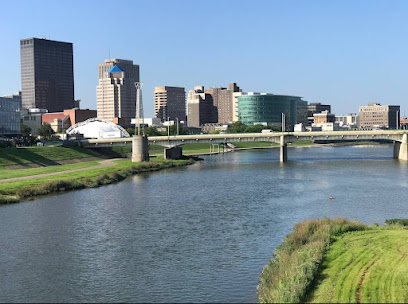The History of Dayton, Ohio: A Journey Through Time

Dayton, Ohio, is a city rich in history, innovation, and resilience. Nestled in the Miami Valley, this bustling metropolis has played a significant role in shaping the United States. From its humble beginnings as a frontier settlement to becoming a hub of industry and innovation, Dayton’s history is a testament to the spirit of progress and ingenuity.
Early Settlement and Growth
The story of Dayton dates back to April 1, 1796, when a group of 12 settlers led by George Newcom established a community along the Great Miami River. Originally known as “Thompson’s Settlement,” it was later renamed Dayton in honor of Jonathan Dayton, one of the signatories of the United States Constitution.
In the early years, Dayton thrived as a trading post and a center for manufacturing. The construction of the Miami and Erie Canal in the 1820s further boosted the city’s growth, facilitating transportation and opening up new markets. By the mid-19th century, Dayton had become renowned for its production of agricultural machinery, earning it the nickname “The Buckle of the Corn Belt.”
Innovation and Aviation
Dayton’s most significant contribution to world history came in the early 20th century when the Wright brothers, Orville and Wilbur, revolutionized human flight. Born and raised in Dayton, the Wright brothers conducted their groundbreaking experiments and made their first successful powered flight at Kitty Hawk, North Carolina, in 1903.
The Wright brothers’ achievement sparked a wave of innovation and transformed Dayton into a hub of aviation and aerospace research. In 1917, the U.S. Army established McCook Field, which later became Wright-Patterson Air Force Base, now one of the largest military installations in the country. The base continues to be a driving force in aerospace technology and research. Know more about Dayton, OH history.
During World War II, Dayton played a crucial role in the war effort, with local industries shifting their focus to production for the military. Companies like National Cash Register (NCR) and Delco Electronics became major suppliers of wartime equipment, contributing significantly to the Allies’ victory.
Modern Dayton and Beyond
In the post-war era, Dayton experienced economic diversification and continued growth. The city became a center for research and development, with companies like Research In Motion (now BlackBerry) and LexisNexis establishing a presence in the area. Additionally, the University of Dayton and Wright State University have played pivotal roles in fostering education and research in various fields.
However, Dayton faced challenges in the latter half of the 20th century, as deindustrialization and economic decline affected many Rust Belt cities. The closure of major manufacturing plants resulted in job losses and population decline. Nevertheless, Dayton demonstrated resilience and embarked on a path of revitalization.
Today, Dayton is undergoing a renaissance, with a focus on urban renewal, entrepreneurship, and the arts. The city’s downtown area has experienced significant revitalization, with the creation of the RiverScape MetroPark, the Schuster Performing Arts Center, and the vibrant Oregon District. Dayton is also home to the National Museum of the United States Air Force, the world’s largest and oldest military aviation museum.
Conclusion
From its early days as a frontier settlement to its current status as a vibrant city, Dayton, Ohio, has a remarkable history. It has been a center of innovation, a hub of industry, and a testament to the resilience of its people. Dayton’s story continues to unfold, leaving an indelible mark on American history.
FAQs
Dayton is renowned for its pivotal role in aviation history, being the birthplace of the Wright brothers, who achieved the first powered, controlled flight in Kitty Hawk, North Carolina, in 1903. Additionally, Dayton has a rich industrial heritage, particularly in manufacturing, and it played a significant role in the advancement of civil rights during the 1960s.
Visitors to Dayton should explore Carillon Historical Park, which preserves the Wright brothers' bicycle shop and showcases the city's industrial and aviation history. The National Museum of the United States Air Force at Wright-Patterson Air Force Base is another must-see, featuring an extensive collection of aircraft and aerospace artifacts. Other notable attractions include the Dayton Art Institute, Riverscape MetroPark, and the Oregon Historic District.
Like any city, Dayton has its share of challenges, but it is generally considered a safe place to live and visit. As with any travel destination, it's essential to take common-sense precautions and be aware of your surroundings. Dayton has a strong sense of community and offers various resources and programs aimed at promoting safety and well-being.
Dayton experiences a humid continental climate, characterized by hot summers, cold winters, and moderate precipitation throughout the year. Summer temperatures typically range from the 70s to the 90s Fahrenheit (20s to 30s Celsius), while winter temperatures can dip below freezing, with occasional snowfall. Spring and fall bring mild, pleasant weather, making them ideal times to visit.
Dayton has a diverse economy, with key industries including aerospace and defense, healthcare, manufacturing, and education. Wright-Patterson Air Force Base is a major economic engine, supporting research, development, and innovation in aerospace and defense. The healthcare sector is also significant, with premier medical facilities such as Premier Health and Kettering Health Network serving the region. Additionally, Dayton is home to several universities and research institutions that contribute to its knowledge-based economy.
